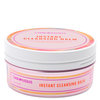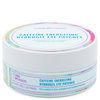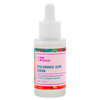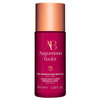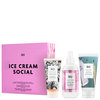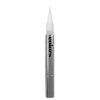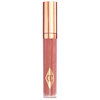
“Wear your sunscreen every day” is a mantra we’ll never get sick of repeating. A small dose of the sun’s vitamin D-infused rays is acceptable, but prolonged contact brings skin cancer, sun spots, and wrinkles. With SPF 30 as the most-advised minimum—it blocks 97% of UVB rays—sun protection is now more important than ever. Most of us are aware of how vital SPF is, but so many have no idea that application is just as important as dosage. The sad news: The vast majority of people greatly under-apply sunscreen, which exponentially decreases its protective powers. So how much should we really slather on? And how do we mix sun care with makeup without looking like a ghost? We chatted with New York City-based dermatologist Jessica Krant, M.D. to get the facts straight.
"Ideally, sunscreen should be applied after cleansing but before makeup, so that it can be next to the cells it needs to protect," says Dr. Krant. "In the lab, sunscreens are tested with fairly generous application—a light, thin layer is probably not enough. In theory, 1/4 to 1/3 of a teaspoon is good enough for the face, and you should use extra to cover your ears, neck, chest, hands, and exposed areas of the arms.” We're supposed to reapply sunscreen every several hours, but admittedly, it’s difficult with a layer of makeup on top. So how do we protect our skin with makeup on? There are number of creative solutions.
SPF powders—which contain titanium dioxide and zinc oxide in powdered form—can prolong the first layer of sun protection without re-applying your makeup. Makeup that’s pre-formulated with SPF—think foundation, blemish balms, and tinted moisturizers—also packs the benefits of pigment with sun protection, but that begs the question: Is SPF makeup enough on its own? "If makeup and moisturizers have at least SPF 30 and are generously applied, these products can be used as sunscreens," admits Dr. Krant. "However, since SPF doesn't measure UVA rays, [responsible for premature aging] it's hard to gauge the level of protection unless it states 'Broad Spectrum.'" For peace of mind and healthier skin, use a separate sunscreen underneath your makeup, regardless!

Dr. Jessica Krant is a board-certified dermatologist and Founder of Art of Dermatology on 5th Avenue in Manhattan, as well as Assistant Clinical Professor of Dermatology at SUNY Downstate Medical Center. Follow her on Twitter @TheSkinMD
You Might Also Like
-

Sun Protection
The Proof is in the Powder: 2 Summer Beauty Savers
- 140
-

Skincare
Avoid The White Cast of Sunscreen
- 106
-

Sun Protection
3 Things to Know When Buying SPF This Summer
- 220
-

Sun Protection
The Past, Present, and Future of Sun Protection Products
- 200
-

Sun Protection
How to Choose the Right Sunscreen
- 5
-

Sun Protection
FDA Sunscreen Update Part 2: Waterproof SPF?
- 33
-

Sun Protection
Chocolate Is The New Tan
- 43
-

Sun Protection
3 Ways to Reapply Sunscreen Over Makeup




 Dr. Jessica Krant is a board-certified dermatologist and Founder of
Dr. Jessica Krant is a board-certified dermatologist and Founder of 